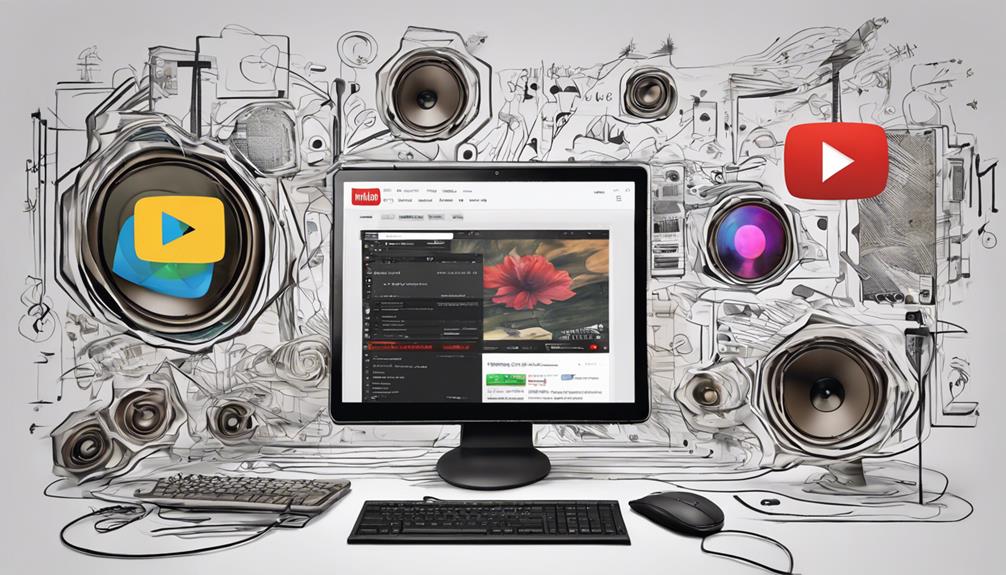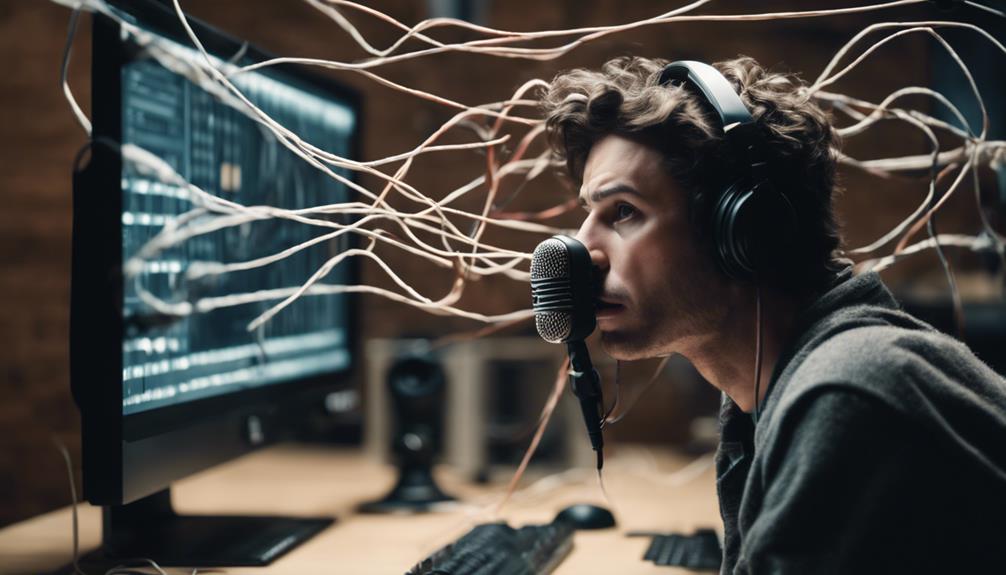To download YouTube music on your computer, visit YouTube Studio and navigate to the Audio Library section. Browse through over 624 music audios of various genres and moods. Preview the tracks to find the perfect fit for your content. Once selected, easily download the music tracks to enhance your videos. Guarantee seamless integration for a professional touch. Accessing YouTube Studio provides a wide array of high-quality music for your creative projects. Start enhancing your video content with just a few clicks.
Key Takeaways
- Access YouTube Studio and Audio Library for music downloads.
- Explore and choose from over 624 diverse music audios.
- Preview and download selected music tracks easily.
- Enhance video editing with high-quality music for a professional touch.
- Monetize content by using royalty-free music and obtaining licenses.
Accessing YouTube Studio
To access YouTube Studio, simply click on the profile icon located on YouTube. Once you click on the profile icon, a dropdown menu will appear, and you can select 'YouTube Studio' from there. This will direct you to the YouTube Studio dashboard where you can manage your videos, channel settings, and more. Within YouTube Studio, you'll find a variety of useful tools to enhance your content creation experience, one of which is the Audio Library.
The Audio Library in YouTube Studio offers a vast collection of over 624 music audios that you can use in your videos without worrying about copyright issues. To explore the Audio Library, scroll down on the left side menu of YouTube Studio until you locate the Audio Library section. From there, you can easily preview music audios by clicking on the play button next to each track. This feature provides a convenient way to enhance your videos with high-quality music that suits your content.
Navigating to Audio Library
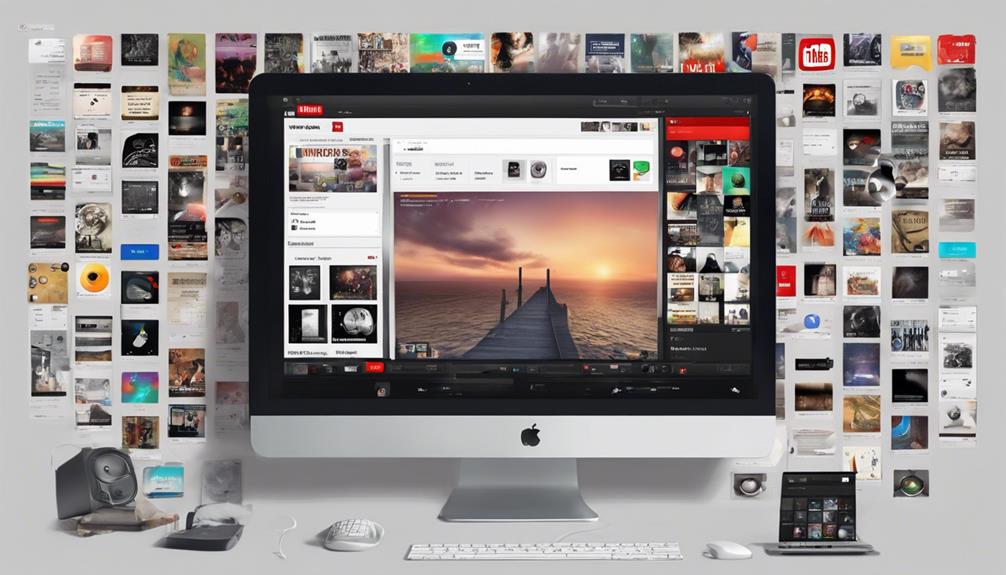
As we explore the Audio Library section within YouTube Studio, a multitude of music audios await discovery. This section is a goldmine for those seeking diverse soundtracks for their projects. With over 624 music audios available for download, the YouTube Music Audio Library offers a wide range of genres and moods to suit various creative needs. Browsing through this collection is effortless, allowing users to preview music tracks simply by clicking on the play button before deciding on the perfect audio for their content.
The Audio Library within YouTube Studio provides a seamless experience for users looking to enhance their videos with high-quality music. Whether you're in search of upbeat tunes for a lively vlog or soothing melodies for a relaxing montage, the Audio Library has something for everyone. Stay tuned as we explore further into the process of discovering and downloading these musical gems in the upcoming section.
Exploring Music Audios
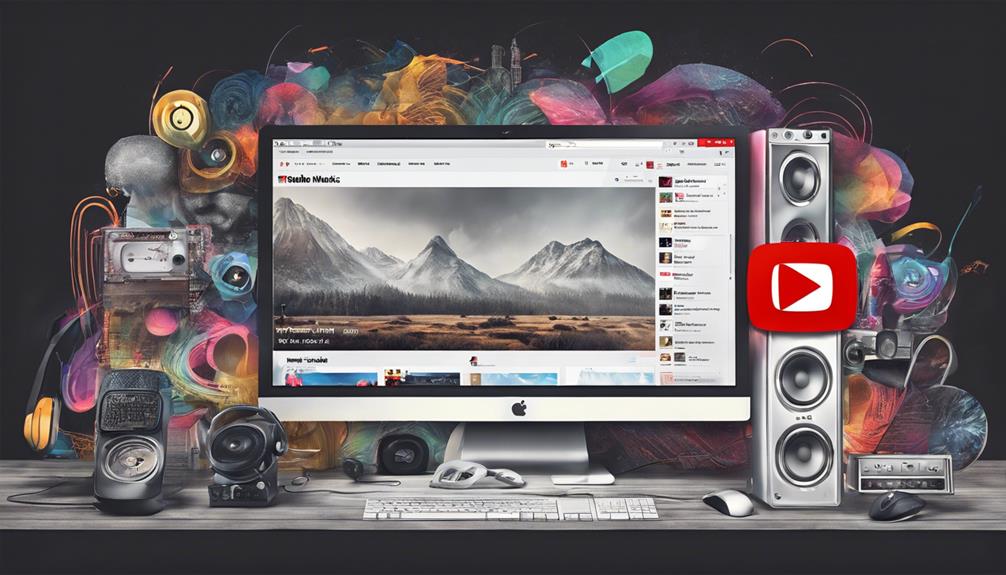
When exploring music audios in the YouTube Studio Audio Library, we'll cover various essential points.
These include:
- Understanding different audio formats
- Comparing sound quality
- Exploring how the music library is organized
Audio Formats Explained
Exploring the various audio formats available in YouTube Studio's Audio Library offers insight into the diversity of music audios for content creators. With over 624 music audios in different formats, creators have a wide range to choose from.
These formats include MP3, WAV, and AAC, each offering unique qualities for enhancing videos. MP3 files are widely compatible and have small file sizes, making them ideal for online sharing. WAV files maintain high audio quality but are larger in size, suitable for projects requiring excellent sound. AAC files balance quality and size efficiently.
Sound Quality Comparison
We can easily discern the varying sound qualities among the music audios within YouTube Studio, allowing for informed decisions when selecting tracks for content creation.
By comparing the sound quality of different music audios, one can explore a diverse range of audio experiences available on YouTube Music. Analyzing factors such as audio fidelity, clarity, production, and mastering helps in identifying the nuances that set each track apart.
Understanding these differences enables creators to choose the best-suited music audio for their content, ensuring a high-quality listening experience for their audience.
When downloading music from YouTube, paying attention to sound quality can elevate the overall impact of the content being created, providing a more immersive and engaging auditory experience.
Music Library Organization
In our examination of music library organization, we explore the diverse range of music audios available in YouTube Studio's extensive collection.
YouTube Studio's Audio Library offers creators access to over 624 music audios for content enhancement.
Users can conveniently preview music audios by simply clicking on the play button before downloading.
Each music audio in the library is equipped with a download button for quick and easy access.
Downloaded music from YouTube Studio can be utilized to elevate the quality of content creation, allowing creators to monetize their videos featuring these audios on YouTube.
Previewing Music Tracks
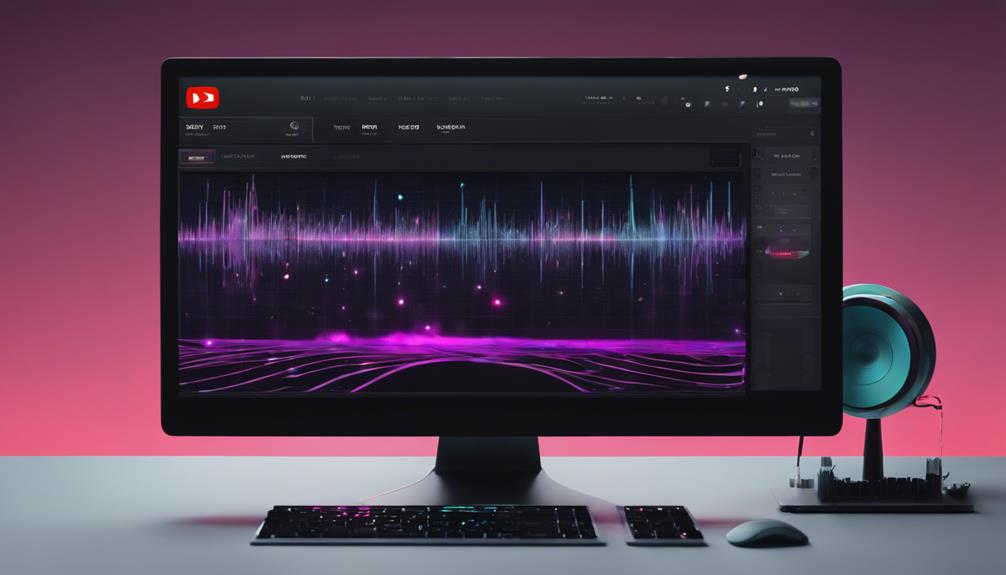
When selecting music for your YouTube content, listening to music tracks in the Audio Library by clicking on the play button next to each track is crucial for making the right choice.
With over 624 music tracks available for previewing in YouTube Studio's Audio Library, you have a wide range of options to enhance your videos.
Previewing music tracks not only aids in selecting the perfect background music for your YouTube music videos but also guarantees that the audio complements your content seamlessly.
Each music track in the Audio Library comes equipped with a download button for convenient access to the audio file, making the process of incorporating high-quality music into your videos a breeze.
Downloading Selected Tracks
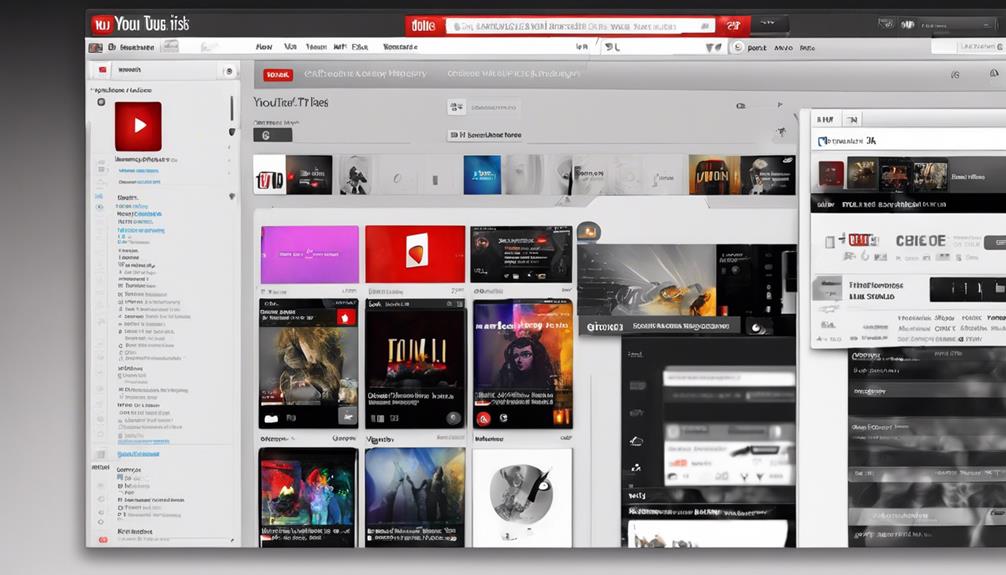
To acquire chosen music tracks from the YouTube Audio Library, simply click on the download button available next to each selected track. Here are four innovative ways to enhance your music downloading experience:
- YouTube to MP3 Converter: Convert YouTube audio tracks to MP3 format for easy offline listening.
- Free YouTube Music: Enjoy access to a vast library of free music to elevate your content without worrying about copyright issues.
- Enhance Content: Use downloaded tracks to enhance your YouTube videos, making them more engaging and professional.
- Monetization: Utilize the downloaded music to monetize your videos and attract a wider audience to your channel.
Liking and Subscribing Benefits
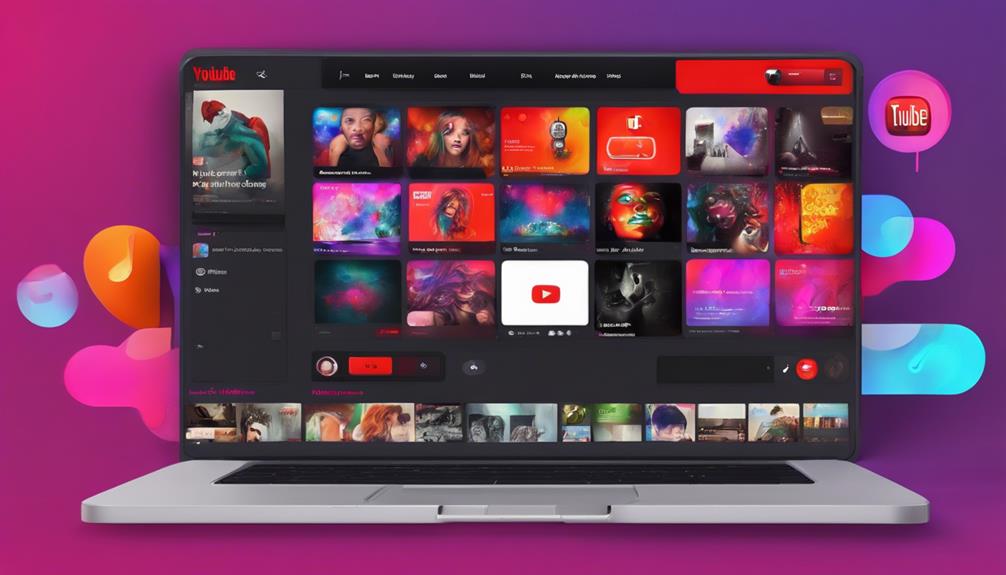
Engaging with YouTube content by liking and subscribing not only supports creators but also boosts their visibility and audience reach.
When you like a YouTube video, you're not just showing appreciation; you're actually helping that video get noticed by more people. The more likes a video has, the higher it can rank on the platform, making it more likely to be recommended to others.
Subscribing to a YouTube channel is like setting up a notification system for new content. It not only helps creators build their audience but also gives you easy access to their latest uploads.
Enhancing Videos With Music
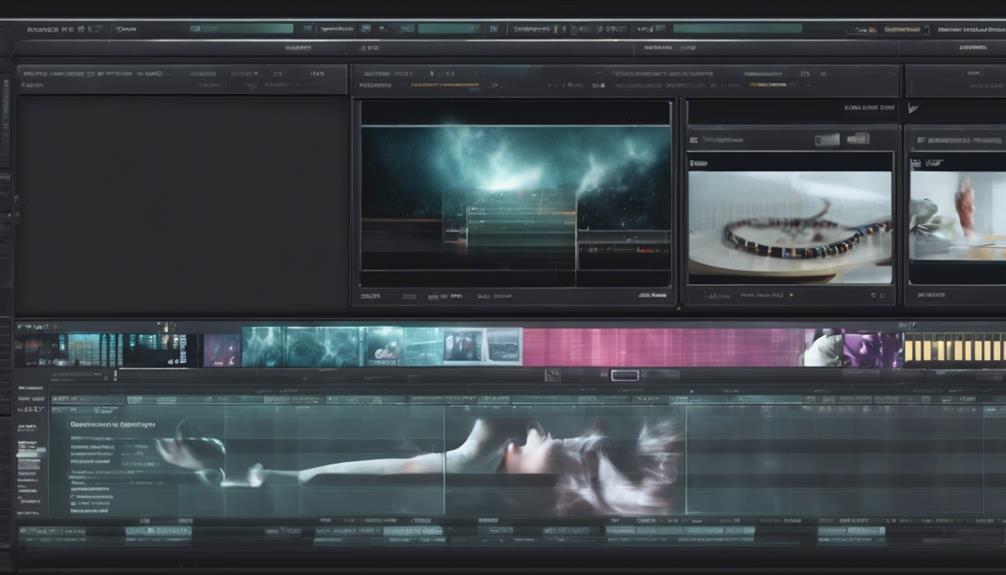
When enhancing your videos with music, consider music selection tips to match the mood and style of your content. Editing techniques for music, such as adjusting volume levels and timing, can further elevate the impact of your videos.
Music Selection Tips
In enhancing videos with music, we aim to select tunes that match the mood and tone of our content, engaging viewers on a deeper level. When choosing music for your videos, consider these tips:
- Match the Mood: Guarantee the music aligns with the emotions you want to convey.
- Consider Tempo: Select a tempo that complements the pace and style of your video.
- Check Copyright: Use copyright-free or licensed music to avoid legal issues.
- Background Element: Use music as a supporting element to enhance visuals and storytelling.
Experiment with various genres and styles to find the perfect soundtrack that resonates with your audience, elevating the overall impact of your videos.
Editing Techniques for Music
To enhance your video content with music, employ various editing techniques such as fading in/out, looping, and adjusting volume levels to synchronize with different video scenes. These methods can elevate the overall viewing experience and create a seamless blend between visuals and audio.
When working with music tracks, pay attention to the audio quality to guarantee a professional result. Experiment with different editing styles to find what best complements your video's mood and message. By incorporating these techniques, you can create engaging and dynamic videos that resonate with your audience.
Remember to take into account how the music selection and editing enhance the storytelling elements of your content, providing a more immersive viewer experience.
Monetizing Content With Music
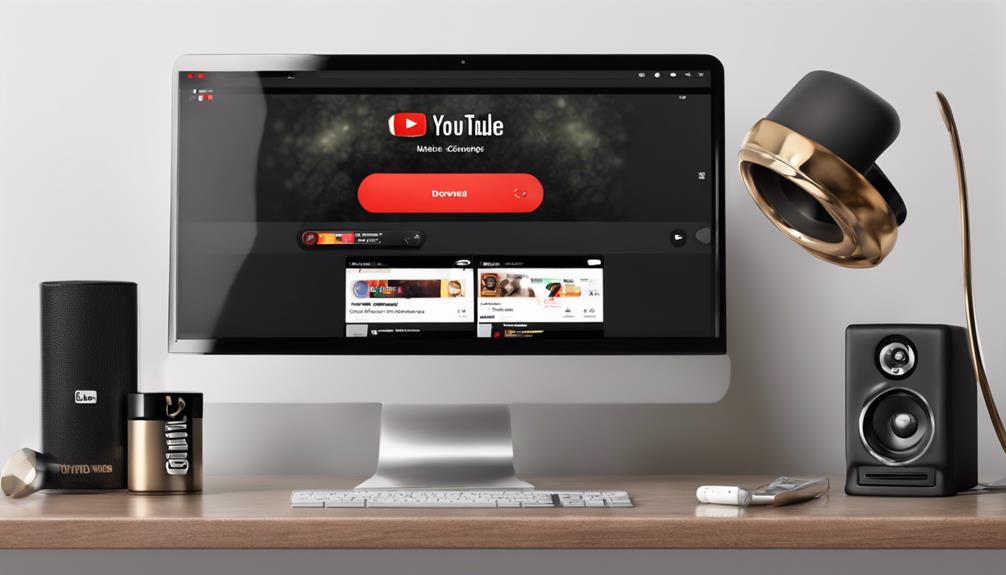
Monetizing content with music on YouTube necessitates obtaining proper licensing to sidestep copyright complications and guarantee compliance with regulations. To effectively monetize your content, consider the following:
- Leverage the YouTube Partner Program: Joining this program enables creators to monetize their videos through various means like ads, memberships, and merchandise sales.
- Utilize Content ID: YouTube's Content ID feature aids copyright owners in managing their content and monetizing it, ensuring proper licensing and revenue sharing.
- Avoid Copyright Infringement: Using copyrighted music without permission can lead to demonetization or even removal of your videos by YouTube, impacting your revenue stream.
- Explore Royalty-Free Music: Opt for royalty-free music or obtain licenses from music libraries to legally monetize your content and avoid copyright issues.
Promising Experience for Viewers
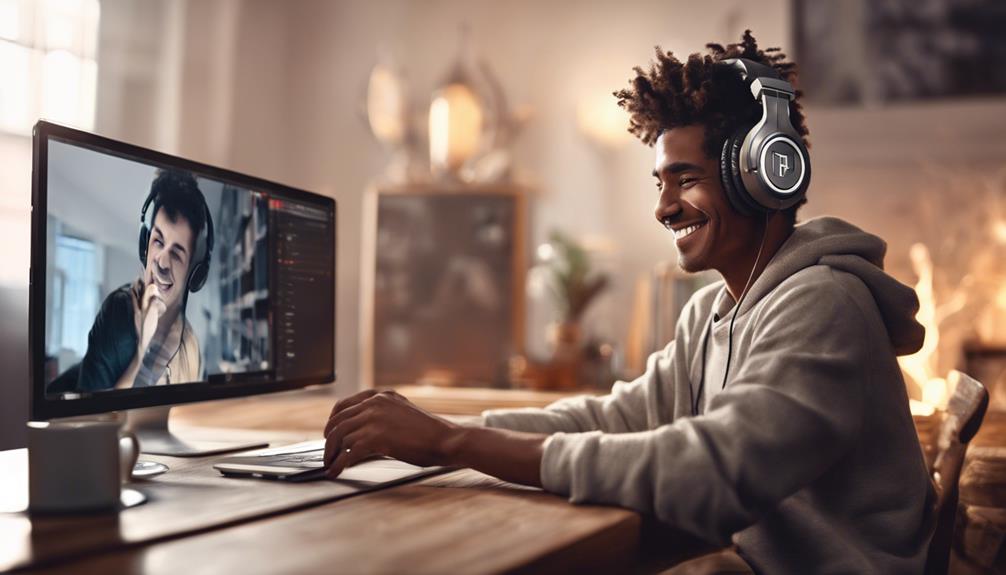
Creating a memorable viewing experience for audiences involves incorporating carefully selected music into your YouTube videos. By utilizing downloaded music from YouTube Studio's Audio Library, you can enhance the overall quality of your content and leave a lasting impression on your viewers. With over 624 music audios available for download in YouTube Studio, you have a wide range of options to choose from to match the tone and theme of your videos. Accessing and utilizing the Audio Library in YouTube Studio is simple and user-friendly, allowing you to seamlessly integrate music into your content.
Here is a visual representation of how incorporating downloaded music from YouTube Studio can elevate your videos:
| Benefits of Using YouTube Studio Music | |
|---|---|
| Enhances viewer engagement | |
| Adds professionalism to your videos | |
| Expands creative possibilities |
Frequently Asked Questions
How Do I Download Youtube Music to My Computer?
To download YouTube Music to your computer, we recommend using third-party software like NoteBurner YouTube Music Converter. This tool allows you to convert YouTube Music to MP3 files on your PC or Mac.
With support for high-quality 256kbps AAC files, you can enjoy an ideal audio experience. NoteBurner YouTube Music Converter enables you to download music from YouTube Music at up to 10X speed while maintaining the original audio quality.
How Can I Legally Download Music From Youtube to My Computer?
To legally download music from YouTube to your computer, consider using YouTube Music Premium or NoteBurner YouTube Music Converter. These tools permit legal downloads for offline listening on your computer.
How Do I Download Audio From Youtube to My Computer?
To download audio from YouTube to your computer, simply access YouTube Studio and navigate to the Audio Library section. There, you can preview over 624 music audios available for download.
Click on the play button to sample the music before choosing what to download. Once you've made your selection, just click the download button.
This easy process allows us to create engaging content for our audience while complying with copyright policies.
How to Download Youtube Music for Free?
To download YouTube Music for free, we can use NoteBurner YouTube Music Converter. This tool allows users to download music from YouTube Music to their PC/Mac even without a Premium subscription.
With support for 256kbps AAC files and quick conversions, it makes enjoying music offline a breeze. Plus, the original audio quality is maintained during the download process, ensuring a great listening experience.
Conclusion
After delving into the ins and outs of downloading music from YouTube, we've discovered a treasure trove of possibilities for enhancing our videos. It's like finding the perfect ingredient to spice up a dish – music adds flavor and depth to our content, making it more engaging for viewers.
By utilizing the tools available in YouTube Studio, we can elevate our creations to the next level and create a truly unforgettable experience for our audience. So, let's get exploring and start creating magic!

